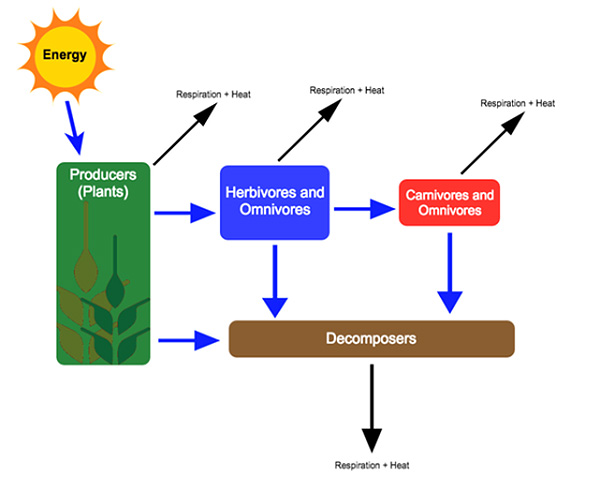
Energy flow in ecosystems showing relative amounts of energy flowing through different trophic levels.
On average, only about 10% of the energy is transferred from one trophic level to the next. The majority of the energy that enters an ecosystem is eventually lost as heat. Think about how this energy flow diagram would look for agroecosystems. How many trophic levels would there be in a vegetable farm? How many levels in a grass-fed beef operation?